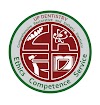By Ray Lawrence
With e-learning on a stellar rise, more and more organizations are evaluating how best to introduce or improve on their learning management systems for online courses, virtual universities and learning portals. Online learning can allow companies to train staff more effectively - from addressing front end staff development to upskilling the training department itself. Businesses are also increasingly recognizing the value of social networking tools in the workplace and many are considering the best way to introduce online discussions and portals.
A wide variety of software packages is available to allow companies to manage their e-learning system - these include proprietary solutions, systems developed in-house, and open source software. The most appropriate option depends upon a variety of factors including: in-house skills for initial set-up and ongoing administration, desired sophistication of the learning management system, accessibility, and number of users (proprietary companies often charge per 'seat' or per user).
Open source differs from shareware or freeware and can be defined as "both the concept and practice of making program source code openly available. Users and developers have access to the core designing functionalities that enable them to modify or add features to the source code and redistribute it. Extensive collaboration and circulation are central to the open source movement1". Such software can be managed completely by an end-user organization or they can use a third party such as HowToMoodle to provide training, hosting and customization. Many organizations begin their experience of such software with help from a third party and use the training they gain to upskill their own staff. They may then choose to manage the ongoing administration themselves and use third party consultancy to help them explore more complex facets of the system and its application to their particular training environment.
Choosing software with a solid and active user base helps to ensure that the software provider will continue development and ongoing support. For example, open source software Moodle has over 48,000 registered sites and the user base has doubled in size in the last year alone. Moodle sites include Dolland & Aitchison, the UK's largest retail optometrists. They used it to develop bespoke training for staff in its 400 stores and support centers after they were unable to find an off-the-shelf package which offered the sophistication in the interpretation of training results that they required. The Chartered Institute of Housing has members in over 20 countries and chose Moodle for its new online Masters degree course.
When costing open source versus proprietary software, the greatest saving will be licence fees associated with closed source software. The organization is not locked into a particular vendor and gains far greater control, speed of change and flexibility than might otherwise be possible.
Open source software is no longer only an option for IT nerds. Moodle is a really intuitive and easy-to-use application that is constantly being added to and refined by the team of developers and community contributors across the world. Closed software is traditionally developed via small beta trials whereas open source software benefits from continual peer review and enhancements through its community of users. Active and mature open source software incorporates improvements on a far more frequent basis than proprietary software yet still follows a published road map.
Back in 2004, open source software to manage e-learning and create courses, activities and communities online was a brand new proposition for businesses. Amongst the early adopters of Moodle were further education colleges who traditionally had good levels of IT expertise in-house but found it hard to find an off-the-shelf system that catered for their complex curriculum and client base. Now the breadth of sectors we deal with is staggering: ranging from the Royal Navy to charities. Open source software is increasing in popularity year-on-year and remains totally free to download and use owing to the absence of license costs. Even the European Union's competition commissioner recently urged the European Commission to use software from open sources2.
We offer some tips for using open source software to develop a learning management system:
- Think about the learning outcomes first and then which tool will help you to achieve these with your learners
- Focus on the activities, try to think beyond the content
- Don't think using open source software means the burden is all on your in-house team, consider using consultants to train your staff or to help you provide the vision to make your learning management system great
- Choose open source software that has a large and active user base, sizable development network and choice of third party trainers/consultants
- Consider sophisticated open source software that allows the learning
management system to be set up to closely match the objectives of your
organization
- Verify how ongoing research and development will be funded or carried out on your proprietary or open source system. There are concerns in the industry that the proprietary systems vendors are increasingly merging, which could lead to a monopoly situation. Could you be linking this mission critical application to a single company whose business aims you don't fully understand and can't influence?
- Think about what other systems you may wish to integrate with your learning management system (eg HR, finance). Open source software is an open system which makes it far easier to integrate with other software applications than proprietary applications - and someone else in the open source community may have already produced a free middleware patch.
1. Lakhan S, Jhunjhunwala, K, (2008) 'Open Source Software in Education' Educause Quarterly. No
2. Tait N (10 June 2008). 'Kroes seeks open-source software for EC' Financial Times.
First published on http://www.trainingzone.co.uk/ November 2008
by Ray Lawrence, Director, HowToMoodle http://www.howtomoodle.com/ Tel: 00 44 845 226 1073
HowToMoodle offers consultancy and training for organizations who wish to use or have already implemented Moodle.
Visit our website for more information http://www.howtomoodle.com/
Article Source: http://EzineArticles.com/?expert=Ray_Lawrence
http://EzineArticles.com/?Online-Learning-Management-Systems---The-Software-Options&id=2811728









